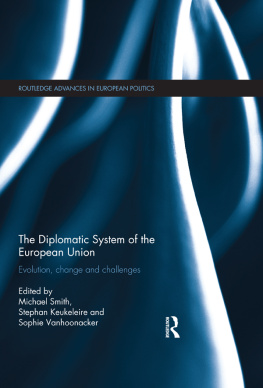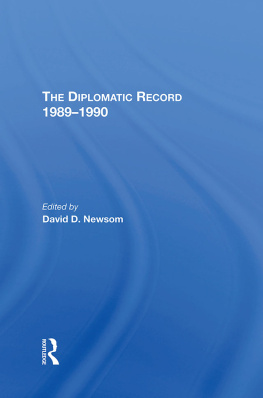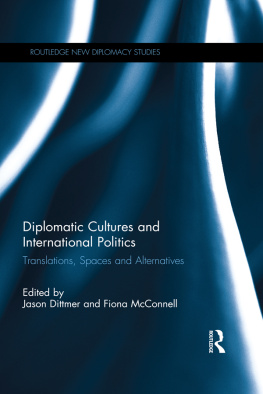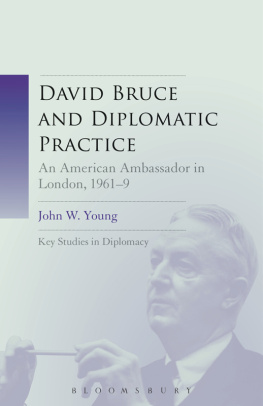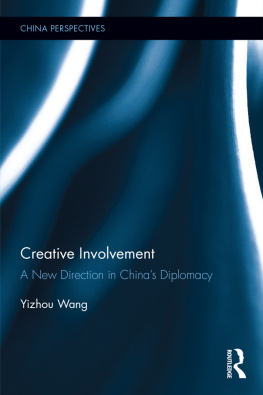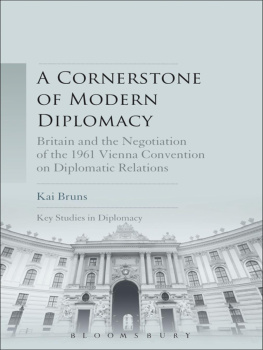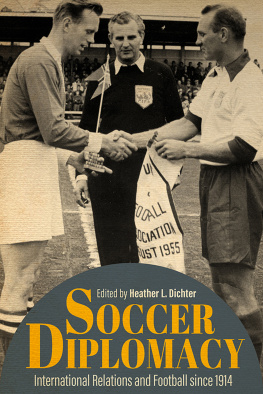
Practices of Diplomacy in the Early Modern World c. 14101800
Practices of Diplomacy in the Early Modern World offers a new contribution to the ongoing reassessment of early modern international relations and diplomatic history. Divided into three parts, it provides an examination of diplomatic culture from the Renaissance into the eighteenth century and presents the development of diplomatic practices as more complex, multifarious and globally interconnected than the traditional state-focussed, national paradigm allows.
The volume addresses three central and intertwined themes within early modern diplomacy: who and what could claim diplomatic agency and in what circumstances; the social and cultural contexts in which diplomacy was practised; and the role of material culture in diplomatic exchange. Together the chapters provide a broad geographical and chronological presentation of the development of diplomatic practices and, through a strong focus on the processes and significance of cultural exchanges between polities, demonstrate how it was possible for diplomats to negotiate the cultural codes of the courts to which they were sent.
This exciting collection brings together new and established scholars of diplomacy from different academic traditions. It will be essential reading for all students of diplomatic history.
Tracey A. Sowerby is currently a Senior Fellow at the Institute for Advanced Studies at the Central European University, Budapest. She is the author of Renaissance and reform in Tudor England: the careers of Sir Richard Morison (c.15131556) (2010) and was PI on the AHRC funded project Textual ambassadors: cultures of diplomacy and literary writing in the early modern world. Her forthcoming publications include The Tudor diplomatic corps and Tudor diplomatic culture.
Jan Hennings is Assistant Professor of History at the Central European University, Budapest. His publications include Russia and courtly Europe: ritual and the culture of diplomacy, 16481725 (2016).
Routledge Research in Early Modern History
For a full list of titles in this series, please visit www.routledge.com.
Honourable Intentions?
Violence and Virtue in Australian and Cape Colonies, c. 1750 to 1850
Edited by Penny Russell and Nigel Worden
Social Thought in England, 14801730
From Body Social to Worldly Wealth
A. L. Beier
Dynastic Colonialism
Gender, Materiality and the Early Modern House of Orange-Nassau
Susan Broomhall and Jacqueline van Gent
The Business of the Roman Inquisition in the Early Modern Era
Germano Maifreda
Cities and Solidarities
Urban Communities in Pre-Modern Europe
Edited by Justin Colson and Arie van Steensel
James VI and Noble Power in Scotland 15781603
Edited by Miles Kerr-Peterson and Steven J. Reid
Conversion and Islam in the Early Modern Mediterranean
The Lure of the Other
Edited by Claire Norton
Plural Pasts
Power, Identity and the Ottoman Sieges of Nagykanizsa Castle
Claire Norton
Practices of Diplomacy in the Early Modern World c. 14101800
Edited by Tracey A. Sowerby and Jan Hennings
Practices of Diplomacy in the Early Modern World c. 14101800
Edited by
Tracey A. Sowerby and Jan Hennings
First published 2017
by Routledge
2 Park Square, Milton Park, Abingdon, Oxon OX14 4RN
by Routledge
711 Third Avenue, New York, NY 10017
Routledge is an imprint of the Taylor & Francis Group, an informa business
2017 selection and editorial matter, Tracey A. Sowerby and Jan Hennings; individual chapters, the contributors.
The right of Tracey A. Sowerby and Jan Hennings to be identified as the authors of the editorial material, and of the authors for their individual chapters, has been asserted in accordance with sections 77 and 78 of the Copyright, Designs and Patents Act 1988.
All rights reserved. No part of this book may be reprinted or reproduced or utilised in any form or by any electronic, mechanical, or other means, now known or hereafter invented, including photocopying and recording, or in any information storage or retrieval system, without permission in writing from the publishers.
Trademark notice: Product or corporate names may be trademarks or registered trademarks, and are used only for identification and explanation without intent to infringe.
British Library Cataloguing-in-Publication Data
A catalogue record for this book is available from the British Library
Library of Congress Cataloging-in-Publication Data
CIP data has been applied for.
ISBN: 978-1-138-65063-3 (hbk)
ISBN: 978-1-315-18637-5 (ebk)
Typeset in Times New Roman
by codeMantra
Contents
Jan Hennings and Tracey A. Sowerby
Part I
Status and sovereignty beyond the state
Duncan Hardy
Gbor Krmn
Lovro Kunevi
Niels F. May
Part II
Familiarity, entertainment, and the roles of diplomatic actors
Giulia Galastro
Katharina N. Piechocki
Florian Khnel
Guido van Meersbergen
David Do Pao
Part III
Objects and beasts
Felicity Heal
Germn Gamero Igea
Frank Birkenholz
Jan Hennings
Christian Windler
Archives/Repositories
| BL | British Library |
| HHStA | Haus-, Hof- und Staatsarchiv, Vienna |
| TNA | The National Archives, UK |
Journals
| CH | Court Historian |
| DA | Dubrovnik Annals |
| EHR | English Historical Review |
| EJIR | European Journal of International Relations |
| EM | Early Music |
| HJ | Historical Journal |
| IHR | International History Review |
| JEMH | Journal of Early Modern History |
| JMedH | The Journal of Medieval History |
| JMEMS | Journal of Medieval and Early Modern Studies |
| JMH | The Journal of Modern History |
| MHJ | The Medieval History Journal |
| PP | Past and Present |
| RHD | Revue dhistoire diplomatique |
| SEER | Slavonic and East European Review |
| ZHF | Zeitschrift fr Historische Forschung |
Jan Hennings and Tracey A. Sowerby
In October 1604, the English ambassador and governor of the Muscovy Company, Sir Thomas Smythe, presented the Russian tsar, Boris Godunov, with a greate present from James VI/I: a heterogeneous collection of objects including magnificent silver gilt plate, a crystal cup, expensive cloth, and a charyott.2 The coach was a material intervention in an ongoing AngloRussian dialogue about the nature and extent of the English amity with the Ottoman Turks.3 The coach was designed to suggest and persuade, just as successive ambassadors to Russia (Smythe included) had been instructed to assure the tsar that Elizabeth would not aid the sultan against him.4 Its lavish decoration emphasized Anglo-Russian amity by including English royal heraldic beasts bearing the English arms, the Russian arms, and several double-headed eagles which alluded to Russian imperial status. Other features of the coachs iconography implied mutual aims and values, for instance through a depiction of St Georgewho held an elevated status in both countrieskilling the dragon. Two large scenes of Russian military victories over turbaned Crimean Tatars suggested shared anti-Ottoman sentiment, while in the carved front panel a tsar led a triumphal procession. Cumulatively, the coachs decoration intimated English goodwill towards Russias anti-Ottoman sentiment.5 As visual rhetoric designed to shape the course of inter-princely relations, the coach may have been too successful: it appears to have sufficiently raised the tsars hopes that James would join him in an offensive league that the tsar prepared to send an embassy to England to discuss furthering the AngloRussian alliance.6 Yet James had no intention of agreeing to a military coalition against the Ottomans, for he wished to continue lucrative trading relations with both the Russians and the Turks.




